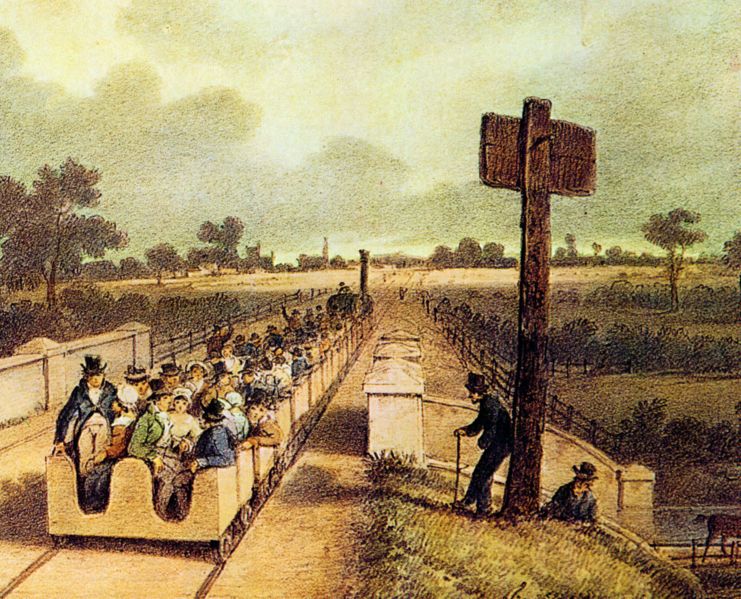
The construction of railways into the Humberside region further stimulated tourism, particularly day trippers. In his book (s.p.b.s) D’Orley presented a number of examples unearthed from his researches, these described on p.35. For example, on 22nd. August, 1844 a pleasure train from West Yorkshire brought 3,200 people to Hull in 82 carriages ‘being the longest train that ever visited this town’. This figure seems incredible but for the fact that ‘carriages’ then were not like carriages today, presumably similar to those seen in the painting above, this showing the scene at the opening of the Manchester to Liverpool Railway in 1830. Early railway ‘carriages’, particularly those with sides and a roof, were designed like stage coaches, maybe some made by the same firms. The Railway Act of 1840 required all railway companies to provide third class accommodation on most trains as well as the standard first and second class accommodation; with this being a legal requirement imposed on private companies by Parliament the term ‘Parliament trains’ was born. Indeed, it may have been that by the time of the trip to Hull above it may have been a ‘Parliament train’, but the timescale suggests not.
Another example given by D’Orley is that on 12th September 1844 seven ‘monster trains’ brought 8,800 passengers in 311 carriages to Hull from Leeds.
As previously stated some of these rail excursions were deliberately timed to link to pleasure steamers setting off; for example passengers from Leeds could alight at Hessle and catch the ferry from Hessle Haven (close to the station) for a few more years yet or catch the ferry from Hull to New Holland having walked through the Old Town.
The whole issue of pleasure trips stimulating the income of the early railway companies is one which I haven’t previously seen in the context of early railway history. Also now lost is the notion that the upper Humber Estuary has scenic appeal, although the landscape remains the same!